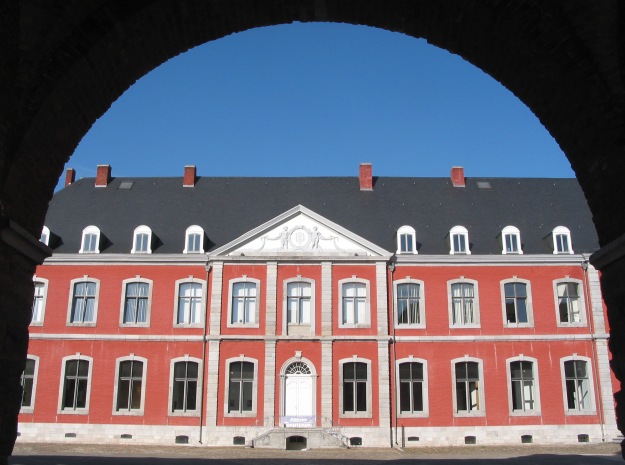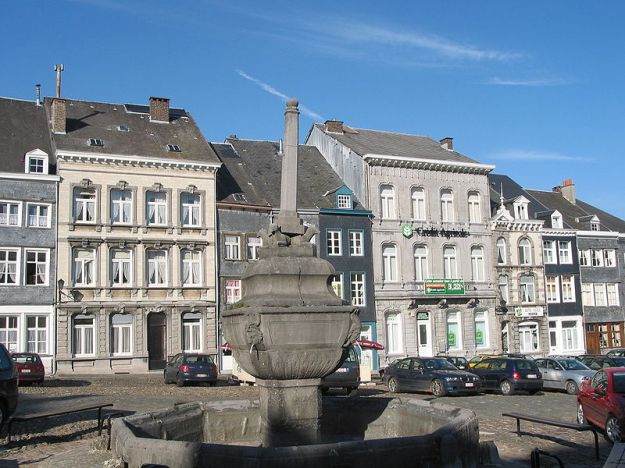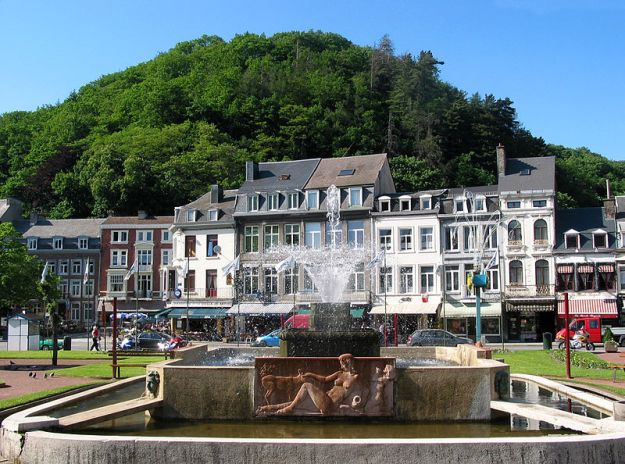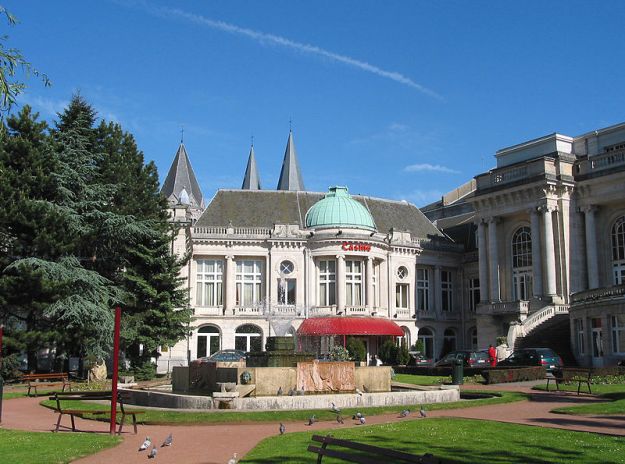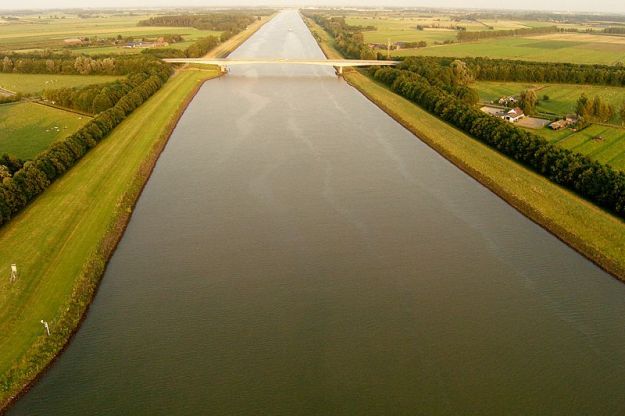Before I arrived into the inverted world of Holland, I had to walk through the Ardennes in Belgium and travel by boat through Limburg and Brabant in the Netherlands. In the beginning of the hike it was lovely autumn weather in the Ardennes. The leaves on the trees were brown and yellow; the landscape showed the last warmth of the year. The evenings were short and the nights were colder; soon I had to find a warm place to stay because winter came soon. Fortunately, the nights were quiet and I slept well because I had got a good sleeping bag.
The path of the GR 5 via the Ardennes was easy and charming. First I walked by nature; at farms I received almost always a meal in exchange for a story. After a few days I passed a more densely populated area. Stavelot was the first town that I visited in Belgium; I marvelled at the wealth of the Abbey.
For a small town with a little more than 6000 inhabitants, Stavelot has an impressive centre, with many stately houses.
The night after the visit to Stavelot, there was a brief intense thunderstorm. The thunder rolled through the valleys, but this storm did not last long and it brightened quickly. From Stavelot, I walked along the GR 5 to Spa, a former Spa in the Ardennes. I was under the impression of wealth in this region.
Just outside Spa I stayed in the open air; my hotel had the starry sky as roof and my room included the universe.
The next morning it was drizzly weather. In the rain, interspersed with sunny spells I walked within a few days to Visé at the Meuse.
There I met an owner of a boat who needed help due to illness during the trip to Amsterdam. So I sailed in bleak autumn weather along Maastricht, Roermond, Venlo, Nijmegen, Utrecht to Amsterdam. I traveled dry and comfortable with a cost and indwelling.
In Brabant, Utrecht and Holland I was amazed about the water that was higher in a channel than the land and the houses in the polder. In Utrecht and Holland, I was astonished at the vastness and the flatness of the country. This was an inverted world of everything I had met earlier in my life.
In the Port of Amsterdam I said farewell to the skipper. In the Centre of the city I saw strange, striking people. Some looked like gnomes and so they called themselves. Everything was different; the young people played the boss of the elderly. The music was different and the people wanted to swing, but these stiff people could not. With mind-altering drugs young people made the world more colourful than the grey surroundings looked like. Sometimes it went wrong with the hallucinogenics. Some inhabitants in this inverted world thought that they might fly – vanity came before the fall. The first days I met several lovers in this city where men may love men; the temporary party – that took more than 10 years of my life, started……
[1] Source image: http://fr.wikipedia.org/wiki/Stavelot
[2] Source image: http://fr.wikipedia.org/wiki/Stavelot
[3] Source image: http://fr.wikipedia.org/wiki/Spa_(ville)
[4] Source image: http://fr.wikipedia.org/wiki/Spa_(ville)
[5] Source image: http://nl.wikipedia.org/wiki/Wezet
[6] Source image: http://en.wikipedia.org/wiki/File:AmsterdamRijnkanaal.air.jpg
